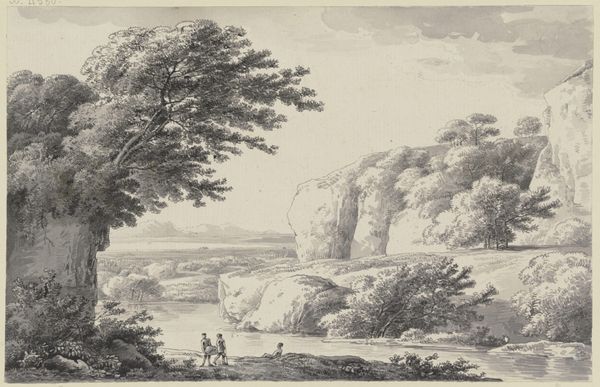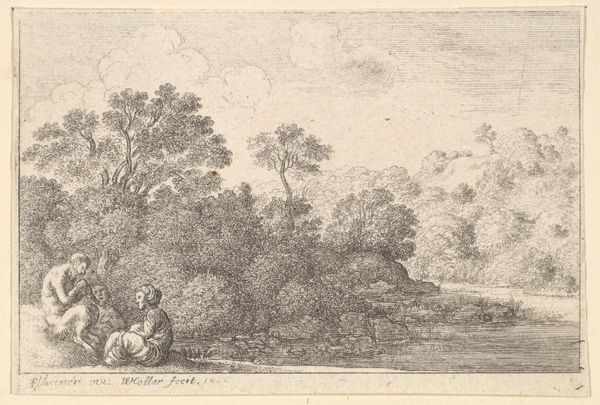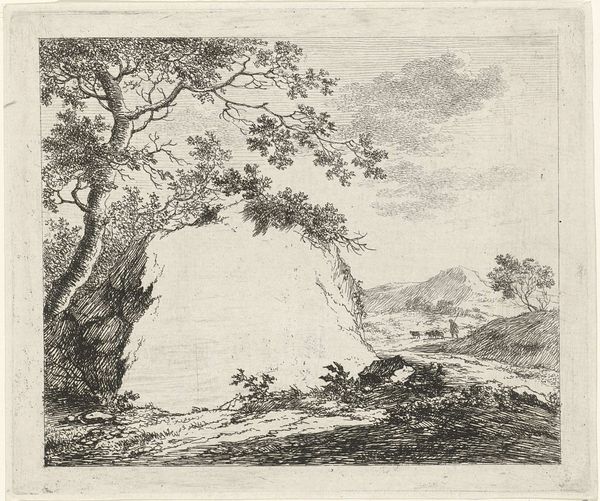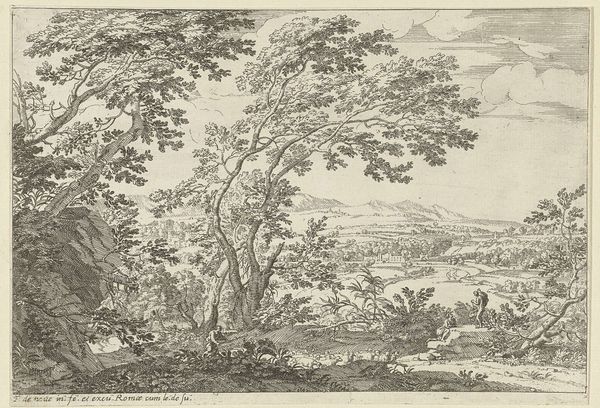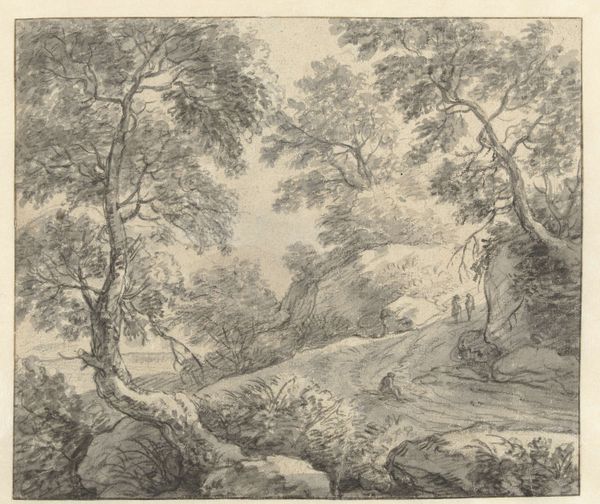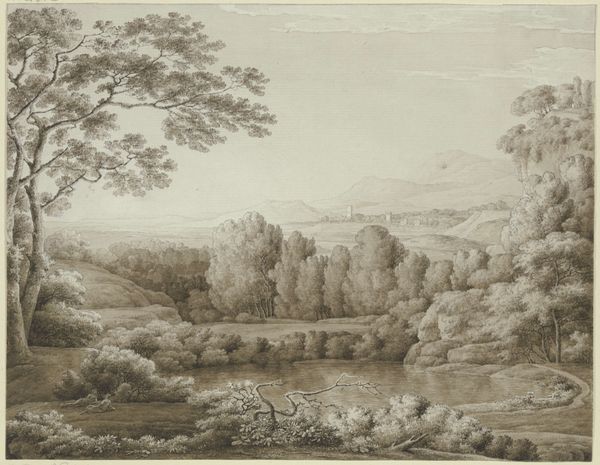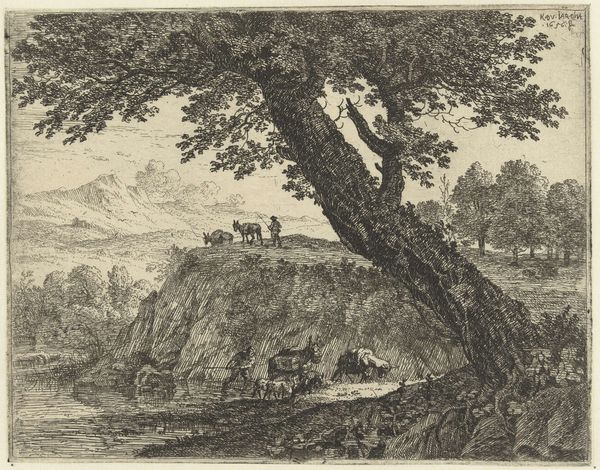
print, etching, engraving
#
neoclacissism
# print
#
etching
#
landscape
#
engraving
#
realism
Dimensions: height 202 mm, width 231 mm
Copyright: Rijks Museum: Open Domain
Curator: Here we have Hendrik Voogd's "Landscape with a Seated Shepherd and Two Cows," likely created sometime between 1788 and 1839. It's currently held in the Rijksmuseum. What strikes you first about it? Editor: It feels remarkably calm. The textures, even in monochrome, suggest softness, and the composition creates a gentle, almost melancholic mood. The details really give it that emotional feel. Curator: Indeed. Voogd, while often associated with neoclassicism, really explores realist landscape traditions in this print. It’s an etching and engraving. Note how labor-intensive both processes are, the meticulous crafting of each line contributing to that textured effect. Editor: Absolutely. And thinking about the materials involved, the plates and the paper – their physical properties play a crucial role in defining the artwork’s aesthetic. It almost feels like Voogd is acknowledging the act of labor that helps us produce this serene image. Curator: Precisely. Notice how the density of lines varies; this helps shape form. Look at the contrast between the dense foliage in the left foreground and the relatively bare open sky towards the upper-right, guiding the eye and defining spatial relations within the image. Editor: I'm curious about the size. A print like this would have likely circulated widely. I wonder about the consumption patterns, the intended audience. Were they urban dwellers seeking an idealized vision of the countryside or part of a larger decorative project within wealthier homes? Curator: An excellent point. Prints provided relatively affordable art to a broader audience than painted canvases. However, it is still very much embedded in the values of the elite and the rising merchant classes in Holland. Editor: Seeing it this way really opens up this "Landscape" beyond mere representation; it becomes a tangible manifestation of labor, materials, and societal aspiration. I look at this work, and I have more to think about. Curator: It allows us to contemplate the convergence of nature, labor, and circulation. A beautiful piece that still asks us so much after all these years.
Comments
No comments
Be the first to comment and join the conversation on the ultimate creative platform.

